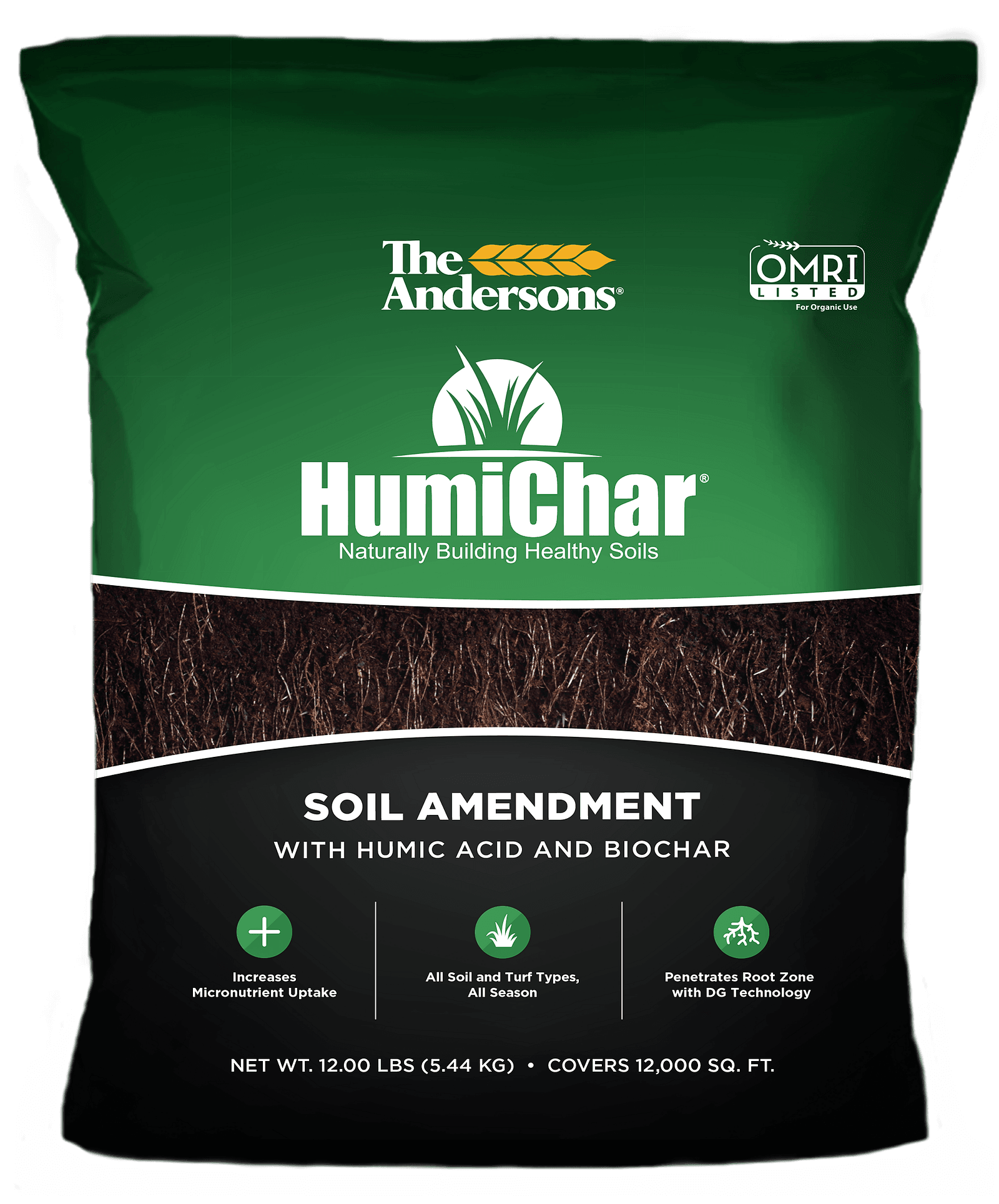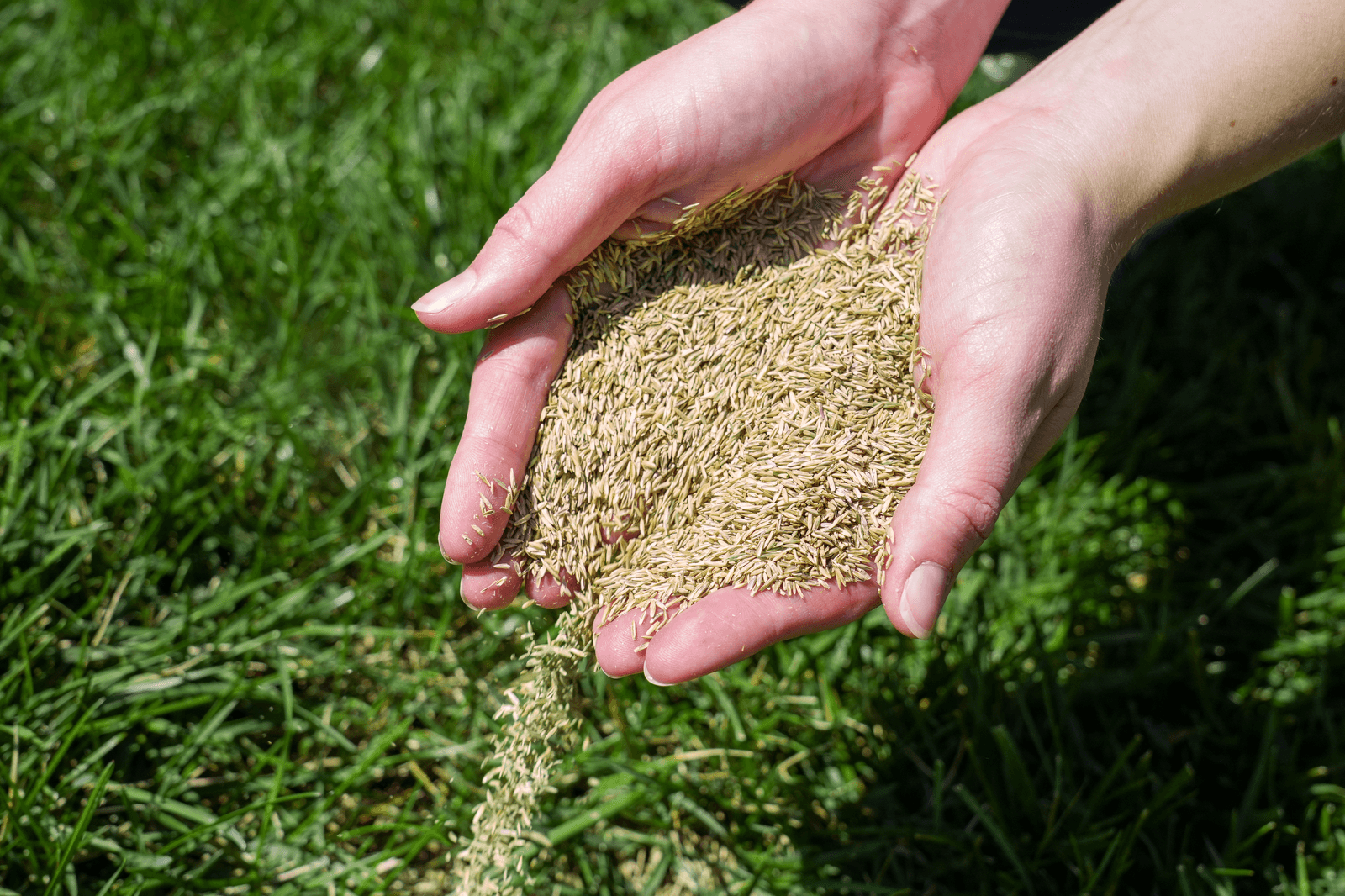As we near the beginning of the fall season, now is the time to consider overseeding in preparation for winter and next spring. Overseeding is an easy technique that can be used to improve the overall quality and thickness of your lawn.
Grass, like any other plant, slows down its reproduction rate over time. A typical blade of grass only lives for an average of about 40 days. To maintain a thick, healthy lawn, grass must be constantly producing new blades to keep up with those that are nearing the end of their life cycle. Put simply, one of the keys to a great lawn is keeping grass young. This is where overseeding comes in.
When to overseed your lawn will depend on geography and grass type. Generally, warm-season grasses are found in the south with cool-season grasses typically found in the north. The transition zone, an area through the center of the country, contains both cool- and warm-season grass types. Not sure which grass type you have? See the map below.

Timing
Timing is one of the biggest keys to success when overseeding.
September is the ideal timeframe to overseed cool-season grass, as it will provide optimal growing conditions in many of the cooler regions of the country.
While overseeding warm-season grasses is less common, the timeframe would push back towards October or early November based on weather conditions. Keep in mind, this is using cool-season turf seeds to overseed warm-season turf to develop a green cover of cool-season grass while the warm-season grass goes dormant for the winter. The general rule of thumb is to target 20-30 days prior to the first frost (or coldest time of the year for warm-season geographies), but a more accurate recommendation is to overseed at mid-day air temperatures around 70-75 °F and nightly air temperatures in the 50s.
HOW TO OVERSEED
Step 1: Choose your seed
Overseeding warm-season bermudagrass is best accomplished with ryegrasses, such as The Andersons Perennial Rye Blend. Otherwise, for overseeding cool-season turf, select seed based on your current lawn and your geographic area. Some seed blends contain weed seeds. Read labels carefully and be sure to purchase certified seed, as that will guarantee the seed has gone through a process to ensure it meets quality standards.
Consider using The Andersons Stadium Mix Kentucky Bluegrass or The Andersons Rio Bermuda seed options.
Step 2: Prepare the soil
Seed-to-soil contact is an important part of the success of overseeding your lawn. Mow your current lawn slightly shorter than normal and remove any clippings from the yard. Depending on the size of your lawn, you may want to consider raking to remove thatch and debris to facilitate more seed reaching the soil surface. In order to provide your soil a boost prior to planting grass seed, apply HumiChar at a rate of 4 lbs per 1,000 square feet. Water the product into the soil immediately. Core aerification is also a practice commonly paired with fall overseeding.
Step 3: Spread the seed
Check for the appropriate application rate, which will vary based on seed selection. The Andersons offers two professional-grade broadcast spreaders that will work well to apply grass seed. The YardStar is an excellent choice for the spreading of grass seed, and can also be used for other lawn care products throughout the year. Top dressing and rolling the lawn after spreading the seed can help to achieve seed-to-soil contact for proper germination.
Step 4: Fertilize
As soon as your grass seed is planted, apply The Andersons New Lawn Starter 20-27-5 or 10-10-10 Fertilizer with Humic DG™. Either of these options will provide an excellent kickstart to your newly planted grass seed. Be sure to water the product in immediately after application. When overseeding warm-season turf, remember to lightly fertilize again shortly after seedling emergence. Preventative fungicides, such as The Andersons Prophesy DG, may also be applied at this time.
Step 5: Water!
Keeping the soil moist for the first couple of weeks after overseeding is important for proper germination of the seed. In addition, for the fertilizer and HumiChar to be most effective they must be watered into the turf. Water up to four times daily during the first weeks to ensure consistent moisture.
IMPORTANT NOTE:
If you choose to do any seeding in the fall, pre-emergent applications should wait until the spring. Pre-emergent can inhibit the new seedlings from growing.
Questions?
Get in touch with us. We're always here to help!




